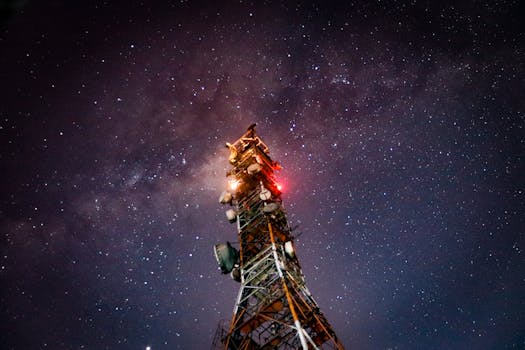
LEO Satellites: Revolutionizing Global Connectivity with Low Earth Orbit Technology
LEO satellites, or Low Earth Orbit satellites, are revolutionizing the way we communicate and access information. With their ability to provide faster and more reliable connections than traditional satellite technology, LEO satellites are transforming the global connectivity landscape. In this article, we will delve into the world of LEO satellites, exploring their benefits, applications, and the impact they are having on various industries.
At the beginning of the LEO satellites era, it is essential to understand the basics of this technology. LEO satellites are a type of satellite that orbits the Earth at an altitude of around 160 to 2,000 kilometers. This proximity to the Earth’s surface allows them to provide lower latency and higher bandwidth connections compared to traditional geostationary satellites, which orbit at an altitude of around 36,000 kilometers.
Benefits of LEO Satellites

The benefits of LEO satellites are numerous. One of the most significant advantages is their ability to provide global coverage, including in areas where traditional communication infrastructure is limited or non-existent. This makes them ideal for applications such as remote sensing, Earth observation, and communication services for remote or underserved communities.
Another benefit of LEO satellites is their low latency. With latency as low as 20-30 milliseconds, LEO satellites can provide real-time communication services, making them suitable for applications such as video conferencing, online gaming, and virtual reality.
Applications of LEO Satellites

LEO satellites have a wide range of applications across various industries. In the field of communication, LEO satellites are being used to provide broadband internet services, including satellite-based cellular backhaul and broadband access for remote communities.
In the field of Earth observation, LEO satellites are being used to collect data on the Earth’s surface, including imagery, atmospheric conditions, and weather patterns. This data is being used for applications such as crop monitoring, disaster response, and climate change research.
Impact on Industries

The impact of LEO satellites on various industries is significant. In the telecommunications industry, LEO satellites are providing new opportunities for operators to expand their services and reach new markets. In the field of aviation, LEO satellites are being used to provide communication services for aircraft, including satellite-based air traffic control and in-flight connectivity.
In the field of maritime, LEO satellites are being used to provide communication services for ships, including satellite-based navigation and communication services for remote vessels. In the field of agriculture, LEO satellites are being used to collect data on crop health, soil moisture, and weather patterns, allowing farmers to make data-driven decisions and improve crop yields.
Conclusion

In conclusion, LEO satellites are revolutionizing the way we communicate and access information. With their ability to provide faster and more reliable connections than traditional satellite technology, LEO satellites are transforming the global connectivity landscape. As the technology continues to evolve, we can expect to see even more innovative applications and uses for LEO satellites, from communication services to Earth observation and beyond.
See more:
